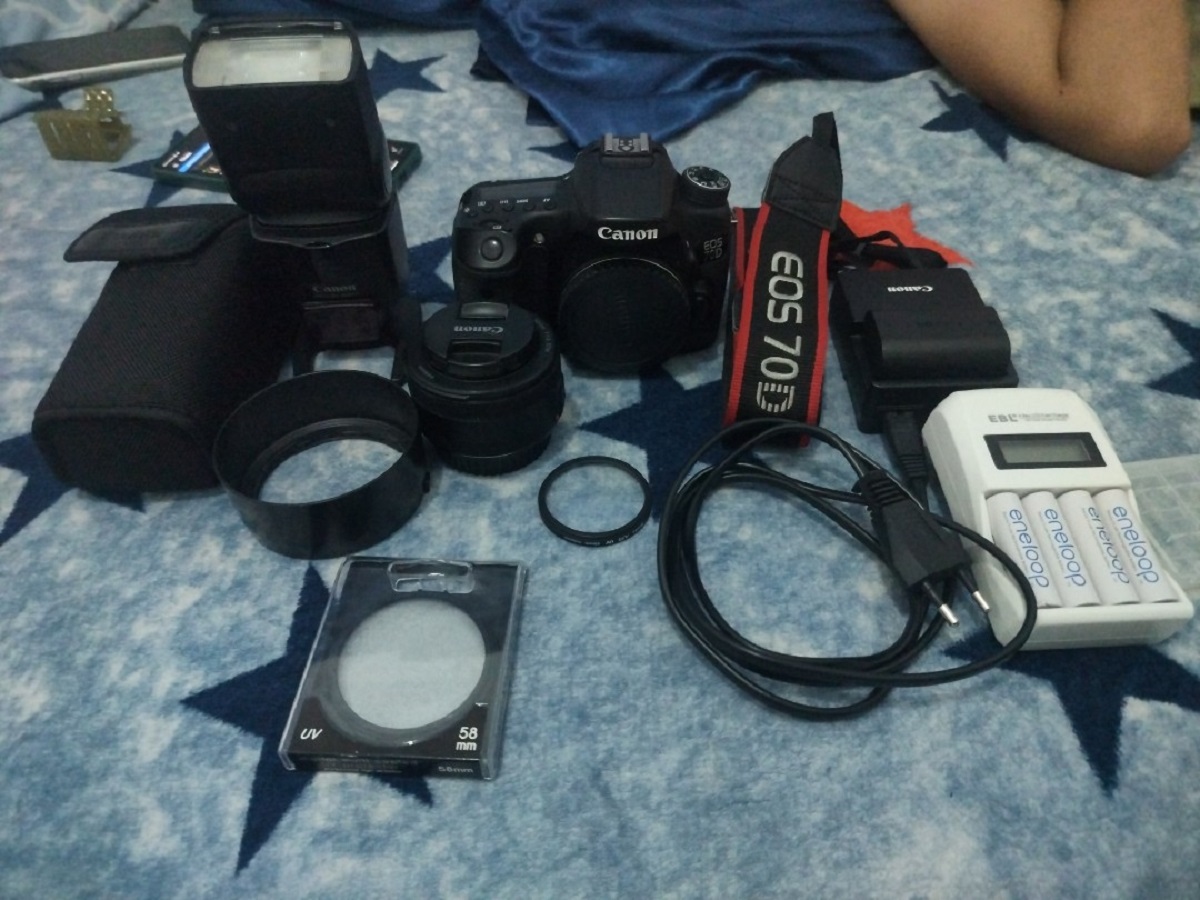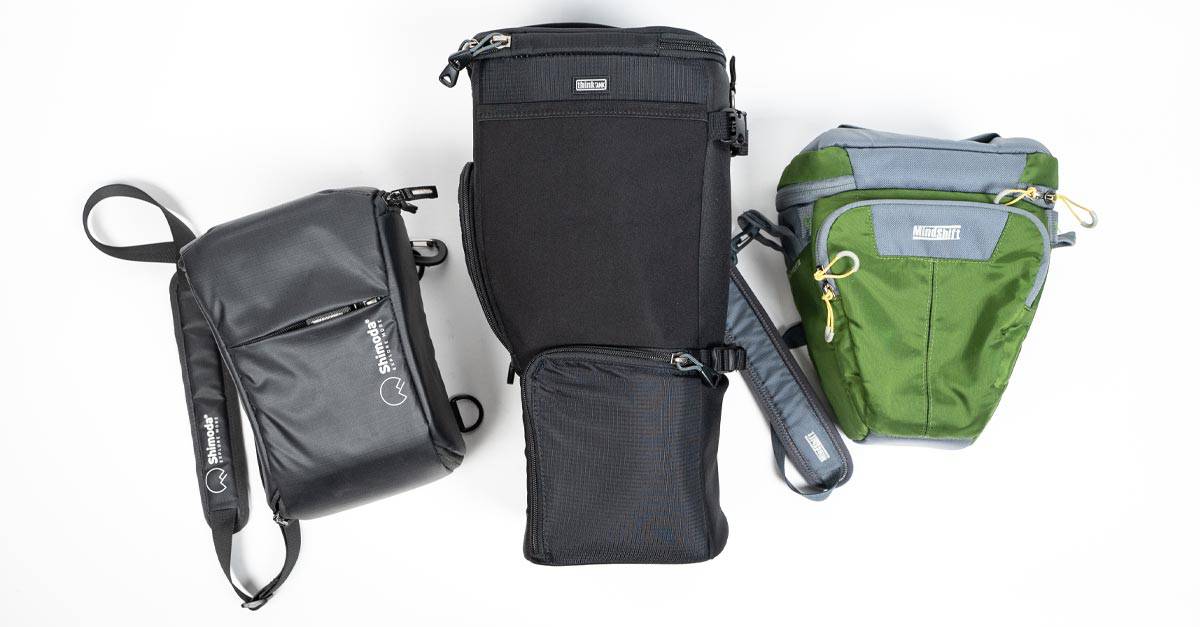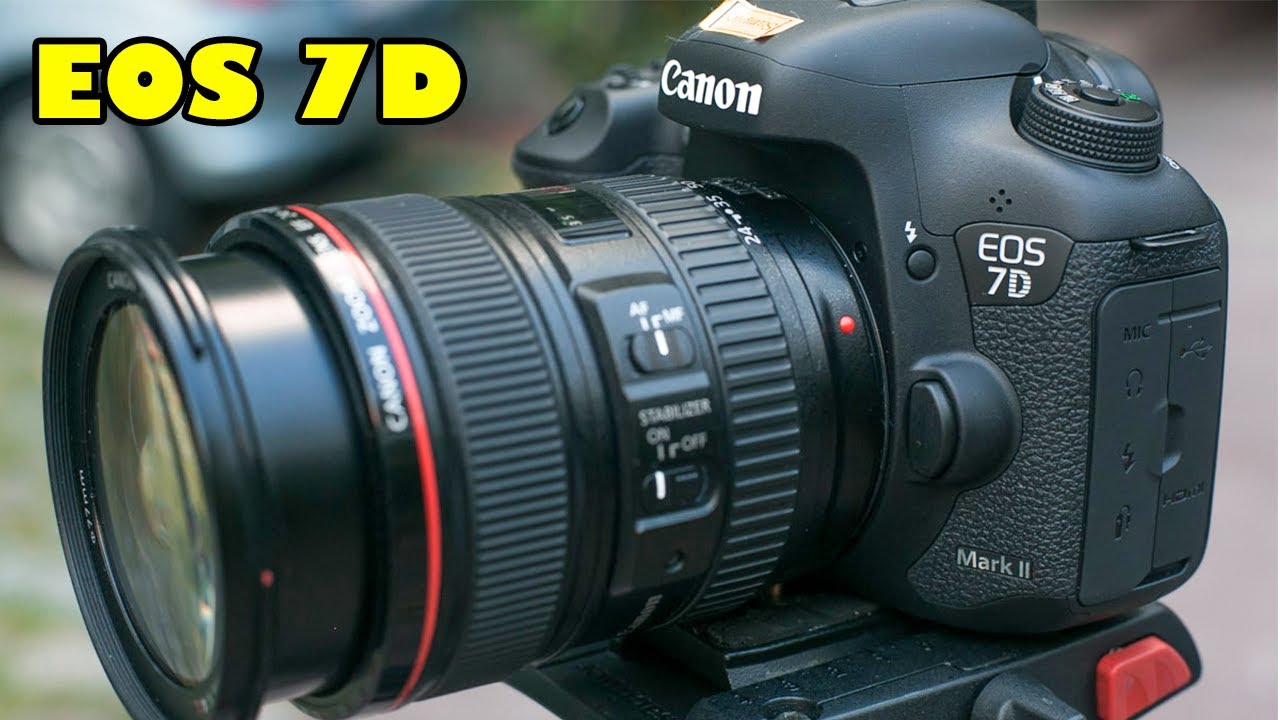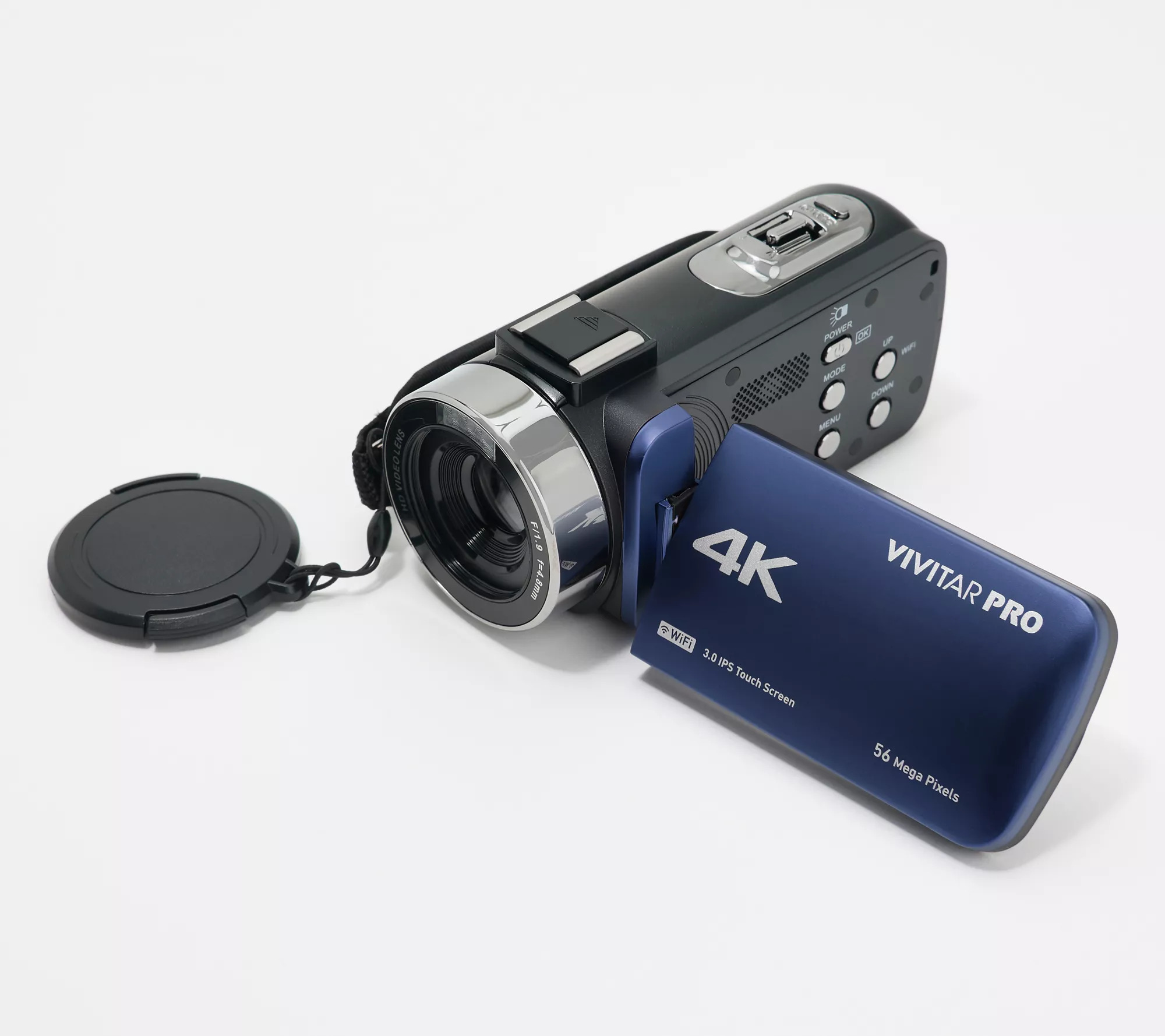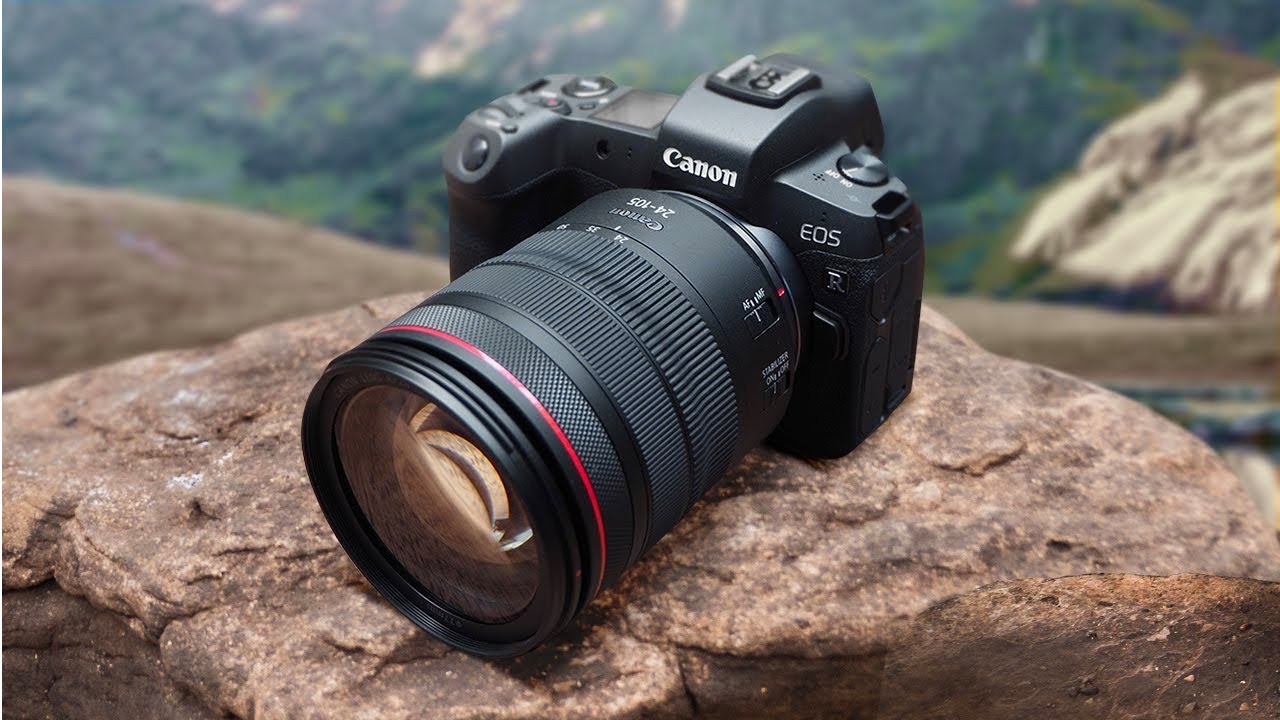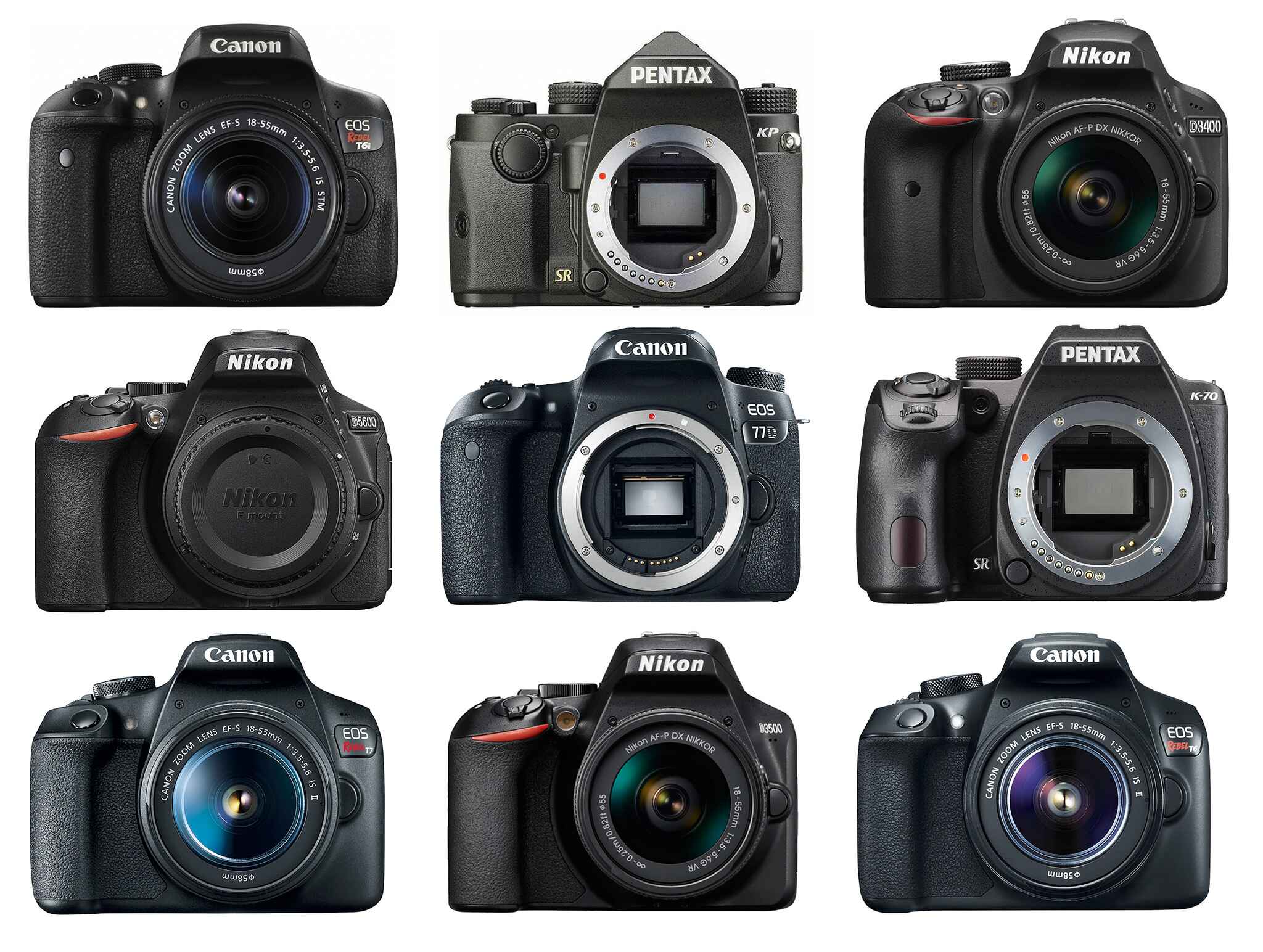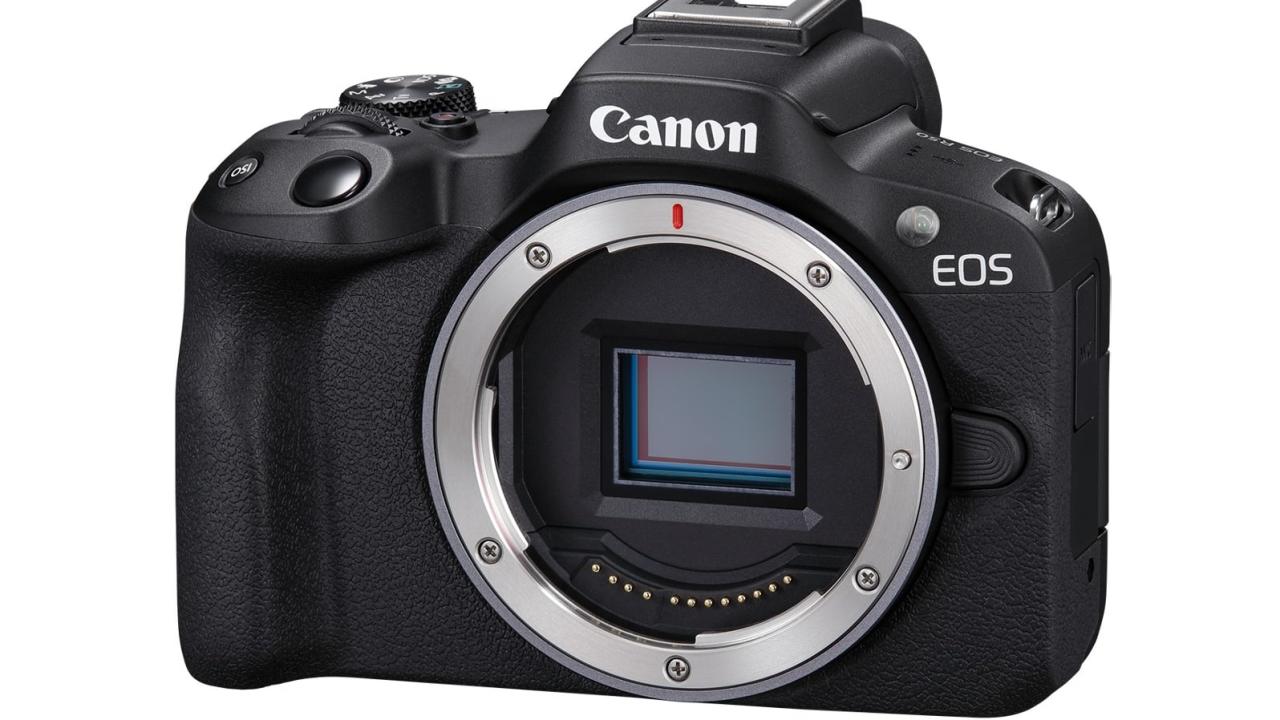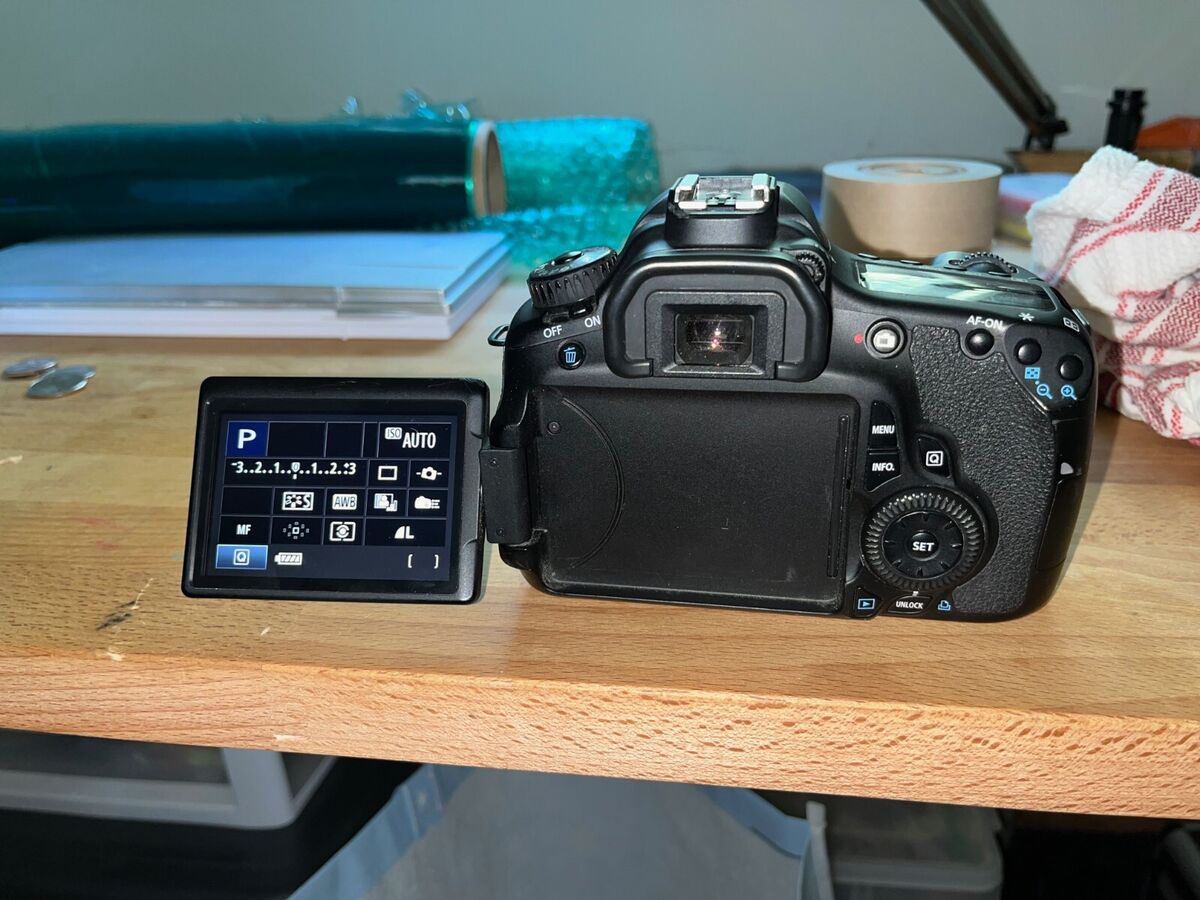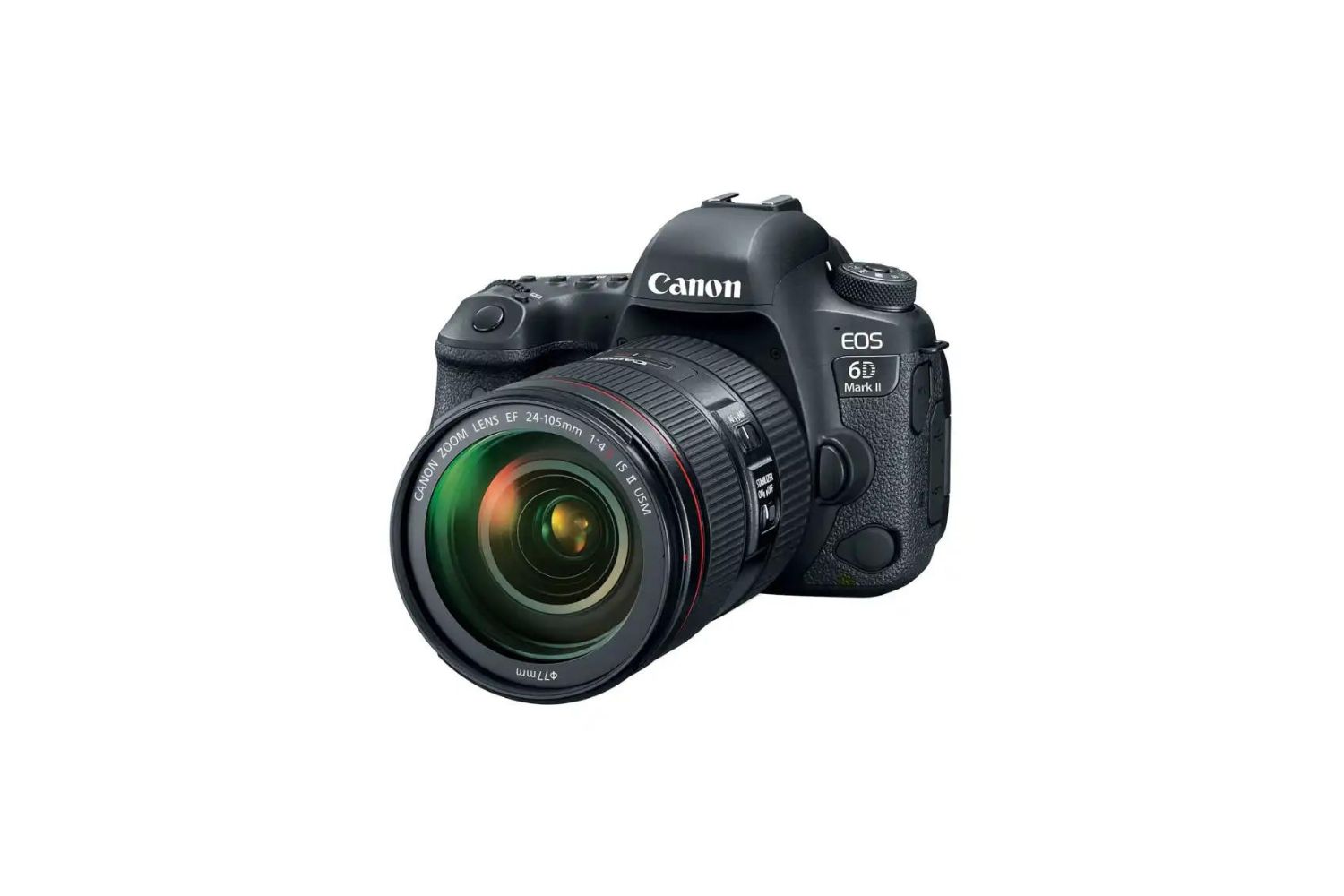Introduction
Welcome to our comprehensive guide on the weight of the Canon EOS 70D Digital SLR camera! Whether you’re a photography enthusiast, a professional photographer, or just curious about camera specifications, understanding the weight of your gear is essential. The Canon EOS 70D is a popular choice among photographers for its impressive features and capabilities. In this article, we will delve into the weight of the Canon EOS 70D, its significance, and the factors that contribute to its overall weight.
When it comes to choosing a camera, weight plays a crucial role in determining its portability, ease of use, and practicality for different shooting scenarios. Understanding the weight of your camera allows you to plan for comfortable carrying, adjust your equipment setup to meet specific needs, and make informed decisions about additional accessories.
The Canon EOS 70D is a powerful DSLR camera that offers advanced features, high-quality image capture, and versatility for both photography and videography. As with any DSLR camera, the Canon EOS 70D consists of several components that contribute to its overall weight. These components include the body, lens, batteries, memory cards, and other accessories that photographers often use in their workflow.
Now, let’s delve into the specifications of the Canon EOS 70D to better understand its weight and how it compares to other cameras on the market. By gaining insight into the weight of this camera, you’ll be equipped with the necessary knowledge to choose the right gear for your photography needs.
Why Weight Matters
The weight of a camera is an essential consideration for several reasons. Whether you’re a professional photographer or an enthusiast, understanding why weight matters can significantly impact your photography experience. Here are some key reasons why camera weight is important:
Portability: Carrying heavy camera equipment for extended periods can be physically demanding and cumbersome. If you’re a travel photographer or frequently shoot on location, having a lightweight camera can make a significant difference in your mobility and overall comfort. A lighter camera allows you to move around freely, explore various angles, and capture those spontaneous moments without feeling weighed down.
Stability: The weight of a camera contributes to its stability, especially when shooting handheld or in low-light conditions. A heavier camera can provide better stability by reducing hand tremors and minimizing camera shake. This stability can lead to sharper images and enhanced overall image quality.
Endurance: If you’re planning long photography sessions or events, the weight of your camera gear can affect your endurance. Holding a heavy camera for an extended period can lead to fatigue, impacting your ability to capture those crucial shots. Opting for a lighter camera can help you stay energized and focused throughout your photography sessions.
Equipment Setup: Considerations should also be made for the additional equipment and accessories that photographers often use alongside their cameras. Lenses, tripods, flashes, and other accessories can all add up in weight. By factoring in the weight of these accessories, you can plan your equipment setup more effectively and choose the right gear that matches your shooting style and requirements.
Transportation: The weight of your camera gear becomes even more critical when traveling. Airline weight restrictions, limited storage space, and the need to pack efficiently all come into play. A lighter camera can make it easier to comply with airline regulations and save you from excess baggage fees. Additionally, a lighter camera setup can free up valuable space for other essential items in your gear bag.
Considering these factors, it becomes evident that camera weight is not a trivial matter. It directly affects your shooting experience, comfort, and the quality of your images. Now that we understand why weight matters, let’s explore the specific weight details of the Canon EOS 70D DSLR camera.
Understanding DSLR Camera Weight
DSLR camera weight is determined by various factors such as the camera body, lenses, batteries, and other accessories. Understanding these factors will give you insight into the overall weight of a DSLR camera like the Canon EOS 70D.
Camera Body: The camera body itself contributes to a significant portion of the overall weight. The Canon EOS 70D weighs approximately 755 grams (26.6 ounces) without a lens attached. This weight includes the internal components, LCD screen, buttons, and other features of the camera body. The body material, build quality, and additional features, such as weather sealing, can also affect the overall weight.
Lenses: The choice of lens can have a substantial impact on the weight of a DSLR camera setup. Lenses come in various focal lengths, aperture ranges, and build qualities, each with their own weight specifications. The weight of the lens you choose to attach to the Canon EOS 70D will add to the overall weight of the setup. It’s important to consider the specific lens requirements for your photography needs while also factoring in the added weight they bring.
Batteries: DSLR cameras require batteries to power their functionalities. The Canon EOS 70D uses a rechargeable Lithium-Ion battery, which contributes to the overall weight of the camera setup. Carrying spare batteries is a common practice for photographers who require extended shooting sessions, but it’s essential to consider the added weight they will bring to your gear bag.
Accessories: Other accessories, such as memory cards, grips, external flashes, and wireless transmitters, can also add weight to your DSLR camera setup. These accessories provide additional functionality and convenience but need to be considered when evaluating the overall weight of your gear.
Understanding the weight distribution and specifications of these components allows photographers to customize their camera setup based on their specific needs. For example, if portability is a top priority, opting for lightweight lenses and accessories can help reduce the overall weight while still maintaining the desired image quality.
Now that we have a better understanding of the key factors that contribute to DSLR camera weight, let’s dive into the specific weight details of the Canon EOS 70D to see how it compares to other cameras in its class.
Canon EOS 70D Specifications
The Canon EOS 70D is a powerful and versatile digital SLR camera that offers exceptional features and performance for both photography and videography. Let’s take a closer look at its specifications:
- Sensor: The Canon EOS 70D features a 20.2-megapixel APS-C CMOS sensor. This sensor size allows for a balance between image quality and portability.
- Processor: It is equipped with Canon’s DIGIC 5+ image processor. This advanced processor enhances the camera’s performance, improves noise reduction, and enables fast continuous shooting at up to 7 frames per second.
- ISO Range: The camera has a native ISO range of 100-12800, expandable to 25600. This wide ISO range provides excellent low-light performance and flexibility in different shooting conditions.
- Autofocus System: The EOS 70D features a 19-point all cross-type autofocus system, allowing for quick and accurate focus tracking. It also has a Dual Pixel CMOS AF system for smooth and precise autofocus during live view shooting and video recording.
- Continuous Shooting: With its high-speed continuous shooting capability, the EOS 70D can capture fast-action moments with ease. It can shoot up to 7 frames per second, making it suitable for sports and wildlife photography.
- Video Recording: The camera offers full HD 1080p video recording at various frame rates, including 30fps and 60fps. It also has built-in stereo microphones and a headphone jack for monitoring audio.
- Connectivity: The EOS 70D comes with built-in Wi-Fi that allows for wireless transfer of images and remote control using the Canon Camera Connect app. It also has an HDMI output for connecting to external displays or recorders.
- Display: The camera features a 3-inch Vari-angle Clear View LCD touchscreen. This versatile screen can be tilted and rotated for convenient shooting in different angles and provides a user-friendly interface for easy navigation through menus and settings.
- Battery Life: The EOS 70D uses a rechargeable Lithium-Ion battery that provides enough power for extended shooting sessions. It offers approximately 920 shots per charge, making it suitable for all-day photography activities.
These specifications highlight the capabilities and performance of the Canon EOS 70D. Now, let’s move on to discussing the weight of the Canon EOS 70D and how it compares to other cameras in its class.
Weighing the Canon EOS 70D
The weight of the Canon EOS 70D is an important consideration for photographers, as it determines the camera’s portability and ease of use. Let’s take a closer look at the weight of this DSLR camera:
Without any accessories attached, the Canon EOS 70D body alone weighs approximately 755 grams (26.6 ounces). This weight includes the internal components, the LCD screen, buttons, and other features of the camera body. It is important to note that different camera models within the Canon EOS series may have slightly different weight specifications.
When adding a lens, the weight of the Canon EOS 70D will vary depending on the lens chosen. Lenses come in various sizes and materials, contributing to the overall weight of the camera setup. For instance, a standard zoom lens like the Canon EF-S 18-55mm f/3.5-5.6 IS STM weighs approximately 205 grams (7.2 ounces). However, using heavier lenses with longer focal lengths or larger apertures may increase the overall weight of the camera setup.
In addition to the camera body and lens, other accessories can affect the weight of the Canon EOS 70D. These accessories include batteries, memory cards, external flashes, and additional grips. It’s important to consider the cumulative weight of all these items when planning for a photography session or while traveling.
Compared to other cameras in its class, the weight of the Canon EOS 70D is relatively average. It strikes a balance between functionality, build quality, and portability. While there are lighter options available, they may sacrifice certain features or performance capabilities. Conversely, there are also heavier DSLR cameras that offer more robust build quality and advanced features.
Ultimately, the weight of the Canon EOS 70D is a result of careful engineering and design considerations to meet the needs of photographers. It provides a versatile and capable camera setup without compromising on portability.
In the next section, we will explore some factors that can affect the weight of the Canon EOS 70D and provide tips for carrying and handling the camera to ensure a comfortable and secure photography experience.
Comparing the Canon EOS 70D Weight to Other Cameras
When considering the weight of the Canon EOS 70D, it’s helpful to compare it to other cameras in its class to gain a better understanding of its portability and size. Let’s take a look at how the weight of the Canon EOS 70D compares to some popular DSLR cameras:
- Nikon D7200: The Nikon D7200 weighs around 765 grams (27 ounces) without a lens attached, making it slightly heavier than the Canon EOS 70D.
- Sony Alpha A6500: The Sony Alpha A6500 weighs approximately 453 grams (16 ounces) without a lens attached, making it noticeably lighter than the Canon EOS 70D.
- Canon EOS 80D: The Canon EOS 80D, a successor to the EOS 70D, weighs around 730 grams (25.7 ounces) without a lens attached, making it slightly lighter than its predecessor.
- Nikon D5600: The Nikon D5600 weighs approximately 465 grams (16.4 ounces) without a lens attached, making it lighter than the Canon EOS 70D.
- Canon EOS Rebel T7i (800D): The Canon EOS Rebel T7i weighs around 532 grams (18.8 ounces) without a lens attached, making it lighter than the Canon EOS 70D.
These comparisons demonstrate that the Canon EOS 70D falls within the average weight range for DSLR cameras. It sits alongside other models in terms of weight, offering photographers a well-rounded balance between features, performance, and portability.
It’s important to remember that the weight of a camera is just one factor to consider when choosing the right camera for your needs. Ultimately, the choice should be based on factors such as image quality, performance, features, and personal preferences.
In the next section, we will discuss some factors that can affect the weight of the Canon EOS 70D and provide tips for carrying and handling this camera to ensure a comfortable and secure photography experience.
Factors Affecting Canon EOS 70D Weight
Several factors contribute to the overall weight of the Canon EOS 70D. Understanding these factors will give you insight into why the camera weighs what it does:
Camera Body: The Canon EOS 70D has a sturdy build with a durable construction that ensures longevity but also contributes to its weight. The materials used in the body, such as metal alloys and reinforced plastics, add to its overall mass.
Internal Components: The internal components of the camera, including the sensor and image processor, add weight due to their complexity and the necessary materials needed for their functionality. These components are crucial for the camera’s performance and image quality.
Features and Functions: The various features and functions of the Canon EOS 70D also contribute to its weight. The inclusion of an articulating LCD screen, a robust autofocus system, and advanced video capabilities add to the overall weight of the camera.
Weather Sealing: The Canon EOS 70D is equipped with weather sealing to protect it from dust and moisture. This added protection comes in the form of seals and gaskets throughout the camera body, which contribute to its weight.
Lens Choice: The weight of the camera also depends on the lens attached to it. The lens selection can significantly impact the overall weight of the setup. Lenses vary in size, materials, and features, which in turn affect the weight of the camera when combined with the lens.
Accessories: Additional accessories such as batteries, memory cards, and external flashes all contribute to the overall weight of the Canon EOS 70D. These accessories are often necessary for extended shooting sessions or specific photography needs.
It’s essential to consider these factors and the resulting weight when choosing your camera setup. The weight of the Canon EOS 70D is a result of a delicate balance between durability, functionality, and performance.
Now that we have explored the factors that contribute to the weight of the Canon EOS 70D, let’s move on to discussing some helpful tips on carrying and handling this camera to ensure a comfortable and secure photography experience.
Tips for Carrying and Handling the Canon EOS 70D
Carrying and handling the Canon EOS 70D properly is important to ensure a comfortable and secure photography experience. Here are some tips to help you carry and handle the camera effectively:
Use a Comfortable Camera Strap: Invest in a high-quality camera strap that provides proper support and distributes the weight of the camera evenly. This will reduce strain on your neck and shoulders during long photography sessions. Adjustable straps allow you to find the perfect length for your comfort.
Hold the Camera with a Firm Grip: When handling the Canon EOS 70D, ensure you have a firm grip on the camera to prevent accidental drops. Hold the camera with one hand around the grip and the other hand supporting the lens. This grip offers stability and control while shooting.
Take Breaks and Rest: If you plan on shooting for an extended period, take short breaks to rest your arms and shoulders. This will prevent fatigue and allow you to maintain a steady hand for better image quality.
Secure Batteries and Memory Cards: Make sure batteries and memory cards are properly inserted and secured in their respective compartments. This will prevent accidental ejection or loss during shooting. It’s also a good practice to carry spare batteries and memory cards when shooting on-location or for extended periods.
Use a Camera Bag or Backpack: Invest in a camera bag or backpack that provides adequate padding and compartments to safely carry your Canon EOS 70D and accessories. Look for bags with adjustable dividers to customize the interior space according to your specific needs.
Protect the LCD Screen: To prevent scratches or damage to the LCD screen, consider using a screen protector or investing in a camera case that provides extra protection. Keep the screen clean using a microfiber cloth to ensure clear visibility.
Be Mindful of Environmental Conditions: When shooting in extreme temperatures or weather conditions, take precautions to protect your Canon EOS 70D. Use lens hoods, filters, and camera rain covers to shield the camera from dust, rain, or excessive sunlight.
Properly Store and Transport the Camera: When not in use, store your Canon EOS 70D in a dry and dust-free environment. Place it in a camera bag or case to protect it from accidental bumps and damage during transportation.
By following these tips, you can ensure a comfortable and secure experience while carrying and handling your Canon EOS 70D. Remember to prioritize your own comfort and safety to fully enjoy the photography process.
In the next section, we will conclude our guide on the weight of the Canon EOS 70D, summarizing the key points discussed throughout the article.
Conclusion
In this comprehensive guide, we have explored the weight of the Canon EOS 70D Digital SLR camera and its significance for photographers. We discussed various factors affecting the weight of the camera, including the body materials, internal components, lenses, and accessories. Understanding these factors allows photographers to make informed decisions about their equipment setup and ensures a comfortable shooting experience.
We compared the weight of the Canon EOS 70D to other cameras in its class, highlighting its average weight and balance between features, performance, and portability. While there may be lighter options available, the Canon EOS 70D offers a versatile and capable camera gear setup without compromising on functionality.
We also provided tips for carrying and handling the Canon EOS 70D, including using a comfortable camera strap, holding the camera with a firm grip, and protecting accessories such as batteries and memory cards. By following these tips, photographers can ensure a secure and comfortable experience while capturing their creative vision.
Ultimately, the weight of a camera is an important consideration that impacts portability, stability, and endurance. By understanding the weight of the Canon EOS 70D, photographers can make informed decisions about their camera setup and choose additional accessories according to their specific needs.
We hope that this guide has provided you with valuable insights into the weight of the Canon EOS 70D and its implications for your photography journey. Whether you’re a beginner or a seasoned professional, understanding camera weight is crucial for achieving the best results in your photographic pursuits.
Now, armed with the knowledge about the weight of the Canon EOS 70D, go out and capture amazing moments with confidence and ease!







